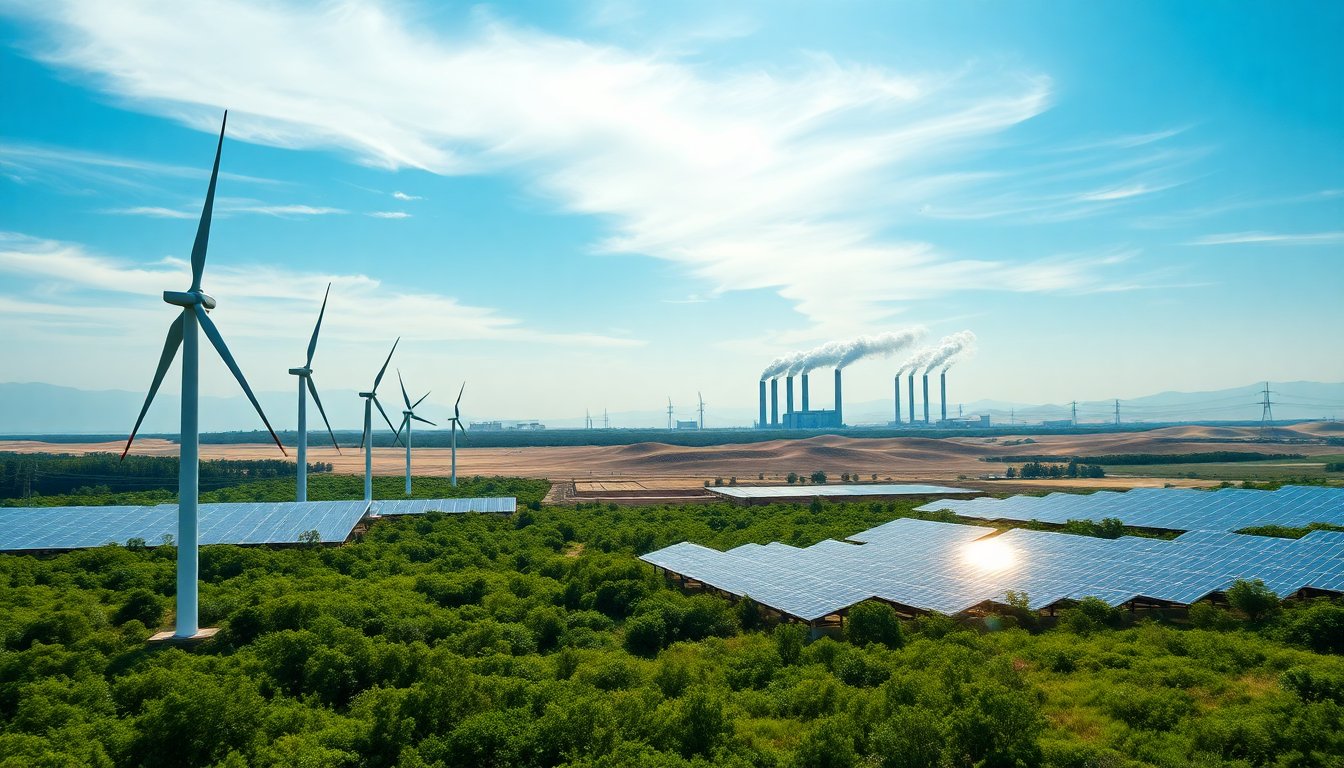Table of Contents
In the heart of western China, the Hexi Corridor illustrates a striking contrast between the growing renewable energy sector and a persistent reliance on coal. This fertile region, nourished by the Yellow River and bordered by the Gobi Desert, is known for its expansive wind farms and solar energy installations. The landscape transforms into a vision of sustainability, with turbines turning in the breeze and solar panels absorbing sunlight. However, just beyond this promising scene lies a powerhouse of a different nature.
The Changle Power Plant, a substantial coal facility, continues to expand its operations. It has recently introduced a new 1-gigawatt coal unit into its energy production mix, adding to the existing six reactors that already supply electricity. This juxtaposition raises questions about the future of energy in a country striving for a greener image while simultaneously strengthening its coal infrastructure.
The energy landscape of Gansu
Gansu province exemplifies the duality of China’s energy production. As one of the country’s leading regions for wind and solar energy, it reflects the government’s commitment to developing sustainable energy resources. Yet, the ongoing investment in coal-fired power plants highlights a complex reality. The demand for electricity continues to surge, with the Changle Power Plant positioned to meet this need despite the global shift towards cleaner energy sources.
A balancing act between coal and renewables
Despite the push for renewable energy, coal remains a significant component of China’s energy mix. The Changle Power Plant exemplifies this trend, operating with six reactors designed to generate substantial amounts of electricity. The plant’s ability to provide a stable power supply places it in a favorable position, particularly in a nation where energy consumption is steadily increasing.
The challenge lies in balancing these two conflicting approaches to energy production. While the government promotes renewable initiatives, coal remains a reliable source of energy that can quickly respond to fluctuations in demand. The Changle Power Plant’s recent expansion is a testament to this reality, as it continues to thrive even as renewable sources gain traction.
Environmental implications and future prospects
As the world grapples with climate change, the environmental impact of coal-fired power plants cannot be ignored. The Changle facility, like many others, contributes to greenhouse gas emissions, raising concerns about air quality and public health. Critics argue that investing in coal undermines efforts to transition to a more sustainable energy future.
Innovations in coal technology
However, the future of coal is not entirely bleak. Advances in clean coal technology are emerging, offering hope for reducing the environmental footprint of coal-fired power generation. These innovations aim to capture and store emissions, potentially allowing coal to coexist with renewable sources in a balanced energy portfolio. The Changle Power Plant is exploring these options to enhance its operational efficiency while minimizing environmental harm.
As Gansu province continues to develop its renewable energy infrastructure, the presence of coal plants like Changle highlights the complexities of transitioning to a greener economy. The challenge will be to integrate these two energy sources effectively, ensuring energy security while addressing environmental concerns.
The coexistence of coal-fired power plants and renewable energy initiatives in China presents a multifaceted challenge. As Gansu province stands at the forefront of this energy evolution, it offers a glimpse into the future of energy production in a world where the demand for electricity is ever-increasing. The path forward will require innovative solutions that reconcile the need for reliable energy with the imperative of sustainability.


